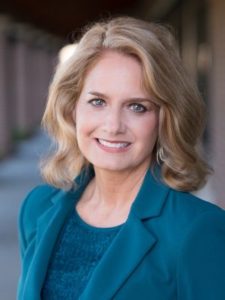Tanya Grosz, University of Northwestern St. Paul – Open Textbooks
 On Part 1 of our Series on the Cost of Textbooks: Should textbooks go digital?
On Part 1 of our Series on the Cost of Textbooks: Should textbooks go digital?
Tanya Grosz, assistant professor of English at the University of Northwestern St. Paul, explores how open textbooks can help students make their dollar go farther.
Tanya Grosz earned her Ph.D. from Northcentral University in Education with an emphasis in E-Learning and Teaching Online. Prior to earning her doctorate, Dr. Grosz was a high school English teacher and has continued to teach literature online at the college level for many years. She became an active proponent of OER after connecting with the Open Textbook Network and implementing an open textbook initiative on Northwestern’s campus, resulting in 50 open textbook adoptions and the first Zero-cost textbook degree in Minnesota. She currently serves on the Open Textbook Network’s steering committee.
Open Textbooks
The average student loan borrower owes more than $30,100. According to researcher Sara Goldrick-Rab, “In 1990, only the poorest quarter of American families had to pay much more than 20 percent of their annual income for higher education. Today, 75% of families pay at least that much—after all grants are distributed!” Today, the maximum Pell grant covers less than one-third of the cost of attending a public college and 60% of the cost of attending a community college.
In the midst of this rather bleak financial picture comes the reality of associated textbook costs. Textbook prices have risen up to 6 times the rate of inflation, up 1,047% since 1971. And according to a 2016 study conducted with over 20,000 students responding from 40 public colleges in Florida, the high cost of textbooks caused 66.5% of students not to take a certain course, 47.6% to take fewer courses, 37.6% to earn a poor grade, 26.1% to drop a course, and 19.8% to fail a course. Clearly, not having a textbook negatively impacts academic performance.
Open Educational Resources or OER are digitally accessible, openly licensed text, media, and other resources useful for teaching and learning. Open textbooks are a specific type of OER, and the textbooks are written by faculty experts and able to be printed at a fraction of the cost of traditional textbooks. Open textbooks aren’t just free; they are able to be reused, revised, remixed and redistributed. From the moment a student logs onto a course, the open textbook is available, and the open license allows a faculty member to augment and edit the open text to make it better.
Open textbooks don’t simply remove financial barriers for students; they empower faculty with choice and the ability to improve upon their curriculum, introducing a continuous improvement loop that previously did not exist.


